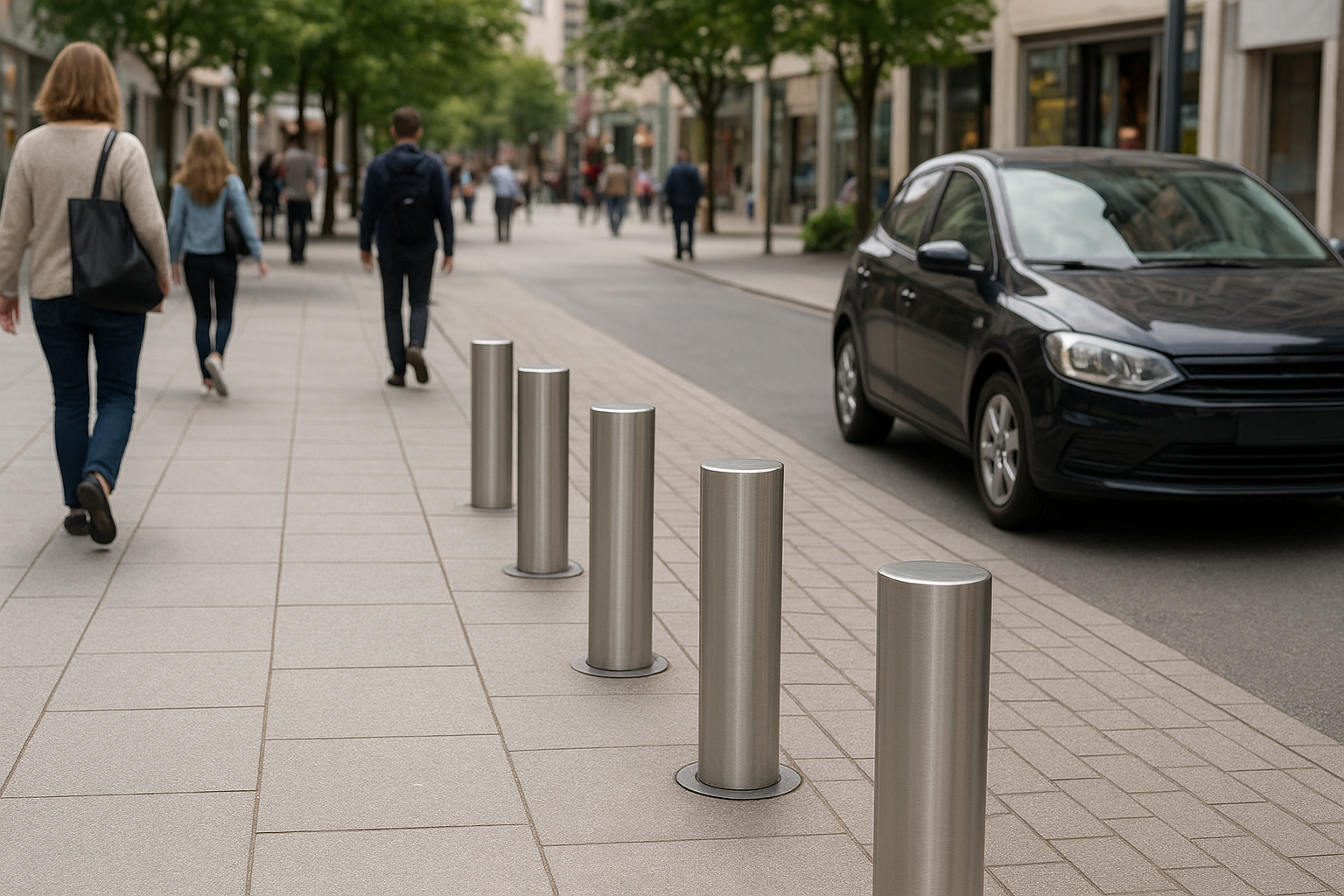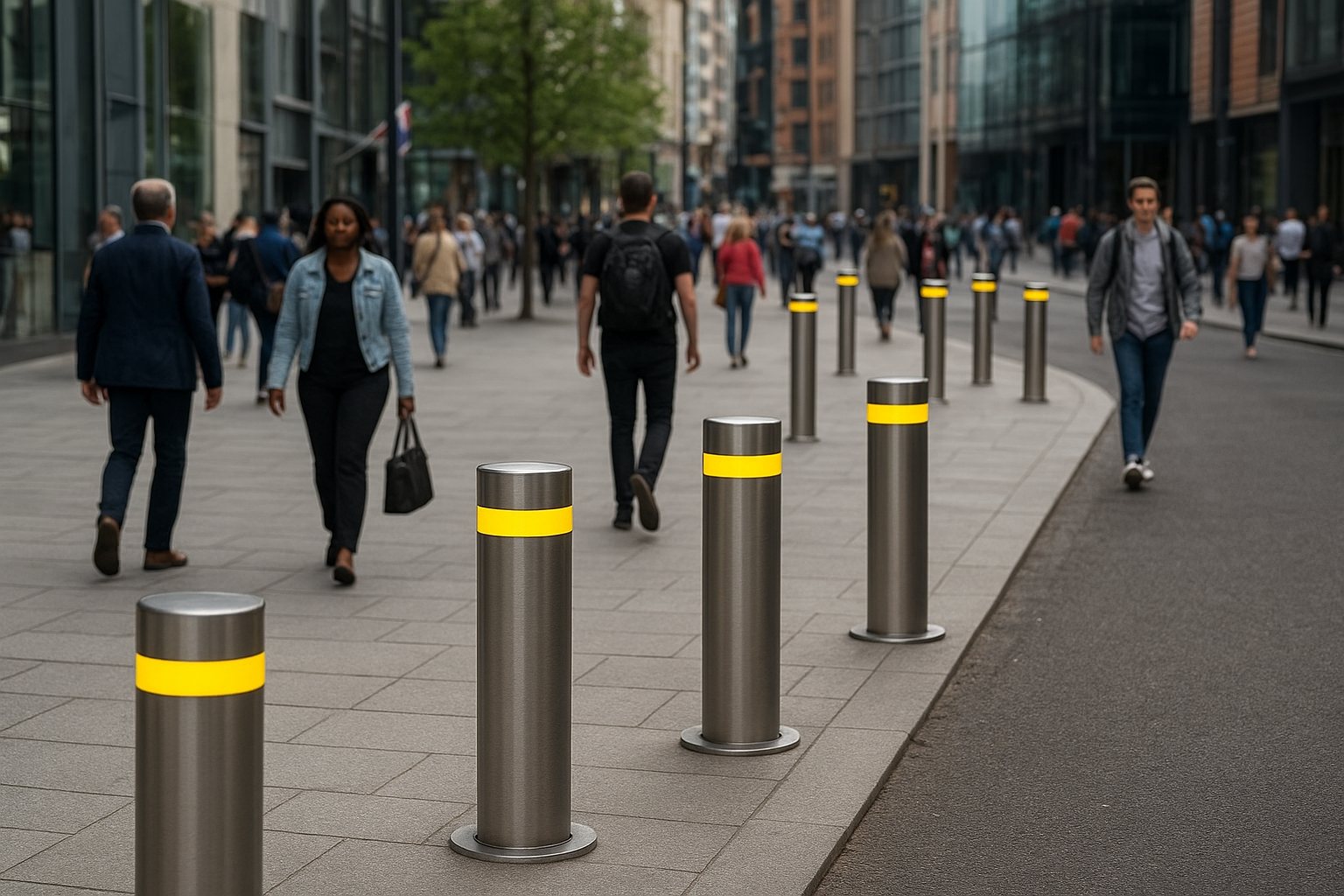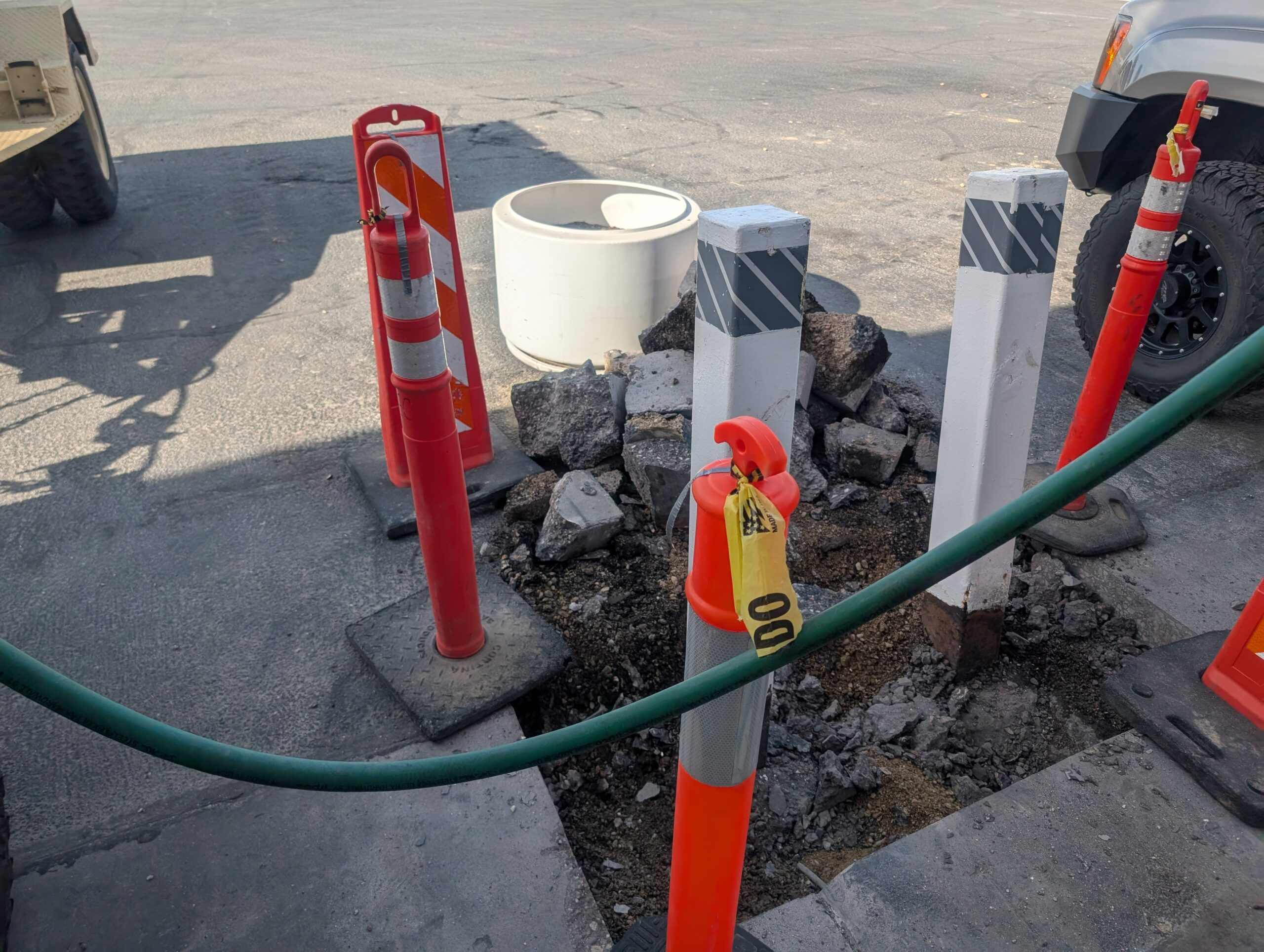By defining your goals, assessing your site, choosing the right bollards, ensuring compliance, budgeting wisely, and preparing for installation, you set the stage for a successful project.
How to Plan Your Bollards: A Step-by-Step Guide with Bollard Brothers
Introduction
Planning a bollard installation is a strategic process that enhances safety, security, and aesthetics for public or private spaces. Whether you’re protecting pedestrians in a bustling urban plaza, securing a retail storefront, or managing traffic flow in a parking lot, careful planning ensures your bollards meet your goals effectively. Bollard Brothers, a leader in innovative bollard solutions, guides you through every step to create a tailored, efficient, and compliant installation. This article provides a comprehensive guide on how to plan your bollards, covering site assessment, bollard selection, regulatory compliance, budgeting, and more, ensuring a seamless project from concept to completion.
Step 1: Define Your Objectives
The first step in planning your bollards is to clarify your goals. Understanding why you need bollards shapes every subsequent decision, from type to placement.
Identify the Purpose:
Security: Protect against vehicle-ramming attacks or ram-raiding, common concerns for government buildings, retail stores, or event spaces. Crash-rated bollards are ideal for high-risk areas.
Pedestrian Safety: Separate walkways from vehicular traffic in areas like schools, parks, or city centers to reduce accidents (e.g., a 2024 study showed bollard-protected zones cut pedestrian injuries by 17%).
Traffic Management: Guide vehicles in parking lots, restrict access to private areas, or create pedestrian-only zones.
Aesthetic Enhancement: Add visual appeal to historic districts or commercial properties with decorative bollards that match architectural styles.
Multifunctional Needs: Combine security, safety, and aesthetics, such as using illuminated bollards for nighttime visibility or smart bollards for traffic monitoring.
Consider Your Environment:
Public Spaces: High-traffic areas like plazas or transit hubs require durable, crash-rated bollards.
Private Properties: Retail or residential areas may prioritize removable or retractable bollards for flexible access.
Coastal or Harsh Climates: Choose corrosion-resistant materials like Ferrocast polyurethane or 316 stainless steel.
Your Action: Write a list of your primary objectives (e.g., “Prevent vehicle access to pedestrian mall, enhance storefront aesthetics”). Contact Bollard Brothers for a free consultation to align your goals with our solutions.
Step 2: Conduct a Site Assessment
A thorough site assessment ensures your bollards are placed effectively and comply with local conditions. Bollard Brothers offers professional assessments, but you can start with these considerations:
Evaluate Traffic and Pedestrian Patterns:
Observe peak traffic times to determine where bollards are needed most (e.g., near busy intersections or event entrances).
Map pedestrian flow to avoid obstructing walkways while ensuring protection from vehicles.
Assess Ground Conditions:
Check soil type (e.g., clay, sand, or rocky) to determine excavation feasibility for root-fixed bollards.
Identify underground utilities (water, gas, or electrical lines) using municipal records or ground-penetrating radar to avoid damage during installation.
Measure Space Constraints:
Ensure adequate spacing for bollards (typically 3-5 feet apart for pedestrian safety, closer for anti-ram security).
Account for accessibility requirements, such as ADA-compliant pathways (minimum 36-inch clear width).
Consider Environmental Factors:
Coastal areas need corrosion-resistant materials like Ferrocast or stainless steel.
Cold climates require insulated pneumatic systems to prevent air pressure issues.
Urban settings may need illuminated bollards for nighttime visibility.
Your Action: Sketch a rough site map or take photos, noting key areas for bollard placement. Schedule a Bollard Brothers site survey (in-person or virtual) for expert analysis, including 3D renderings of proposed layouts.
Step 3: Choose the Right Bollard Type
Selecting the appropriate bollard type is critical to meeting your objectives. Bollard Brothers offers a range of options, each suited to specific needs:
Fixed Bollards:
Best for permanent barriers, such as protecting sidewalks or storefronts.
Materials: Concrete for cost-effectiveness, stainless steel for durability, or cast iron for heritage aesthetics.
Example: Used in Chicago’s Loop to reduce pedestrian accidents by 20% in 2024.
Retractable/Pneumatic Bollards:
Ideal for controlled access, allowing vehicles for deliveries or emergencies.
Features quick-rise mechanisms (3-5 seconds) and smart controls for remote operation.
Example: Bollard Brothers’ “EcoGuard” pneumatic bollards secured a 2025 Los Angeles festival, preventing unauthorized vehicle entry.
Removable Bollards:
Perfect for temporary or multi-use spaces, like event venues or shared plazas.
Lightweight yet sturdy, often made from aluminum or Ferrocast.
Example: Used in Sydney’s pedestrian malls for flexible access during maintenance.
Illuminated Bollards:
Enhance nighttime visibility, ideal for parks, roundabouts, or commercial properties.
Use LED lighting for energy efficiency and smart sensors for adaptive brightness.
Example: Reduced school-zone accidents by 22% in UK trials.
Smart Bollards:
Integrate IoT sensors and AI to monitor traffic, crowds, or security threats.
Example: Bollard Brothers’ SmartShield bollards in Singapore cut emergency response times by 15% in 2024.
Decorative Bollards:
Combine functionality with style, using custom engravings or heritage-inspired designs.
Example: Bronze-finish bollards in a Miami retail complex boosted foot traffic by 10% due to enhanced safety perception.
Your Action: Review your objectives and site assessment to shortlist bollard types. Consult with Bollard Brothers to explore custom options, such as color-matched finishes or IoT integration.
Step 4: Ensure Regulatory Compliance
Bollards must comply with local safety, accessibility, and zoning regulations to avoid fines or project delays. Key considerations include:
Safety Standards:
Crash-rated bollards must meet ASTM F2656 or PAS 68 for high-security applications, ensuring they can stop a 7,500-pound vehicle at 50 mph.
Pedestrian zones must align with ADA guidelines, maintaining clear pathways.
Local Permits:
Cities like New York or London require permits for public installations, especially in historic districts or near utilities.
Bollard Brothers handles permit applications, coordinating with municipal authorities to streamline approvals.
Environmental Regulations:
Use eco-friendly materials like bio-polymers to meet sustainability mandates in green cities.
Ensure proper disposal of excavation waste to comply with environmental codes.
Your Action: Check with your local municipality for specific regulations or let Bollard Brothers manage the permitting process. Provide any relevant property documents (e.g., site plans) to expedite approvals.
Step 5: Budget and Cost Planning
Bollard projects vary in cost depending on type, materials, and site complexity. Here’s a breakdown to help you budget:
Cost Estimates (2025 pricing):
Fixed Bollards: $500-$2,000 per unit (concrete is cheapest, stainless steel or cast iron is pricier).
Pneumatic/Retractable Bollards: $3,000-$8,000 per unit, including control systems.
Illuminated Bollards: $1,500-$5,000 per unit, depending on LED and smart features.
Decorative Bollards: $800-$3,000 per unit for custom finishes.
Installation: $200-$500 per bollard, higher for complex sites or pneumatic systems.
Additional Costs:
Permits: $100-$1,000, depending on the city.
Site preparation: $500-$2,000 for excavation or utility checks.
Maintenance: Minimal for Ferrocast or stainless steel (e.g., $50/year for cleaning), higher for smart systems ($200/year for sensor calibration).
Cost-Saving Tips:
Opt for modular designs to reduce customization costs.
Choose fixed bollards for budget-conscious projects.
Plan installations in phases to spread expenses.
Your Action: Request a detailed quote from Bollard Brothers, specifying your bollard type and site details. Consider long-term savings from durable, low-maintenance materials like Ferrocast, which cut upkeep costs by 30% over 10 years.
Step 6: Plan Installation Logistics
Proper planning ensures a smooth installation day with minimal disruption. Key considerations include:
Timeline:
Small projects (5-10 bollards): 2-4 hours.
Large projects (20+ bollards): 1-2 days.
Complex installations (e.g., pneumatic or smart bollards): 2-3 days due to control system setup.
Site Access:
Ensure clear access for our crew and equipment (e.g., 10-foot-wide entry for excavators).
Coordinate with tenants or neighbors to manage parking or pedestrian restrictions.
Weather Considerations:
Rain or extreme cold can affect concrete curing or pneumatic systems. Bollard Brothers monitors forecasts and uses rapid-set concrete if needed.
Safety Measures:
Plan for temporary signage or barriers to reroute traffic or pedestrians during installation.
Ensure emergency access routes remain clear, especially for retractable bollards.
Your Action: Clear the installation area of obstacles and notify stakeholders about the schedule. Confirm with Bollard Brothers on the exact date and time, typically within a 7 AM-9 AM window.
Step 7: Partner with Bollard Brothers for Expert Execution
Choosing Bollard Brothers ensures your bollard project is planned and executed with precision:
Expert Consultation: Our team provides site surveys, 3D renderings, and regulatory guidance to align with your vision.
Custom Solutions: From crash-rated pneumatic bollards to decorative Ferrocast designs, we tailor solutions to your needs.
Seamless Installation: Our 98% on-time completion rate in 2025 reflects our commitment to efficiency and quality.
Ongoing Support: We offer a 2-year warranty, 24/7 support, and maintenance guides to ensure long-term performance.
Your Action: Contact Bollard Brothers to schedule a consultation. Provide details about your site, objectives, and budget for a customized plan.
Conclusion
Planning your bollards with Bollard Brothers transforms your space into a safer, more functional, and visually appealing environment. By defining your goals, assessing your site, choosing the right bollards, ensuring compliance, budgeting wisely, and preparing for installation, you set the stage for a successful project. Our expertise and innovative solutions make the process straightforward and stress-free. Ready to start planning your bollard installation? Reach out to Bollard Brothers today for a free consultation and let’s create a safer, smarter space together!








